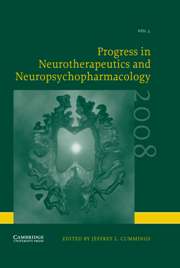No CrossRef data available.
Article contents
Triflusal versus Aspirin for the Prevention of Stroke
Published online by Cambridge University Press: 18 December 2007
Extract
ABSTRACT
Antiplatelet agents represent an important part of the therapeutic armamentarium in the prevention of stroke. Triflusal is an antiplatelet agent structurally related to salicylates but not derived from acetylsalicylic acid. Like aspirin, triflusal irreversibly acetylates cyclo-oxygenase isoform 1 (COX-1) and therefore inhibits thromboxane biosynthesis. Triflusal is rapidly absorbed after oral administration, with an absorption half life of 0.44 hours. Evidence of the efficacy and safety of triflusal is derived from clinical trials performed in patients with unstable angina, acute myocardial infarction, stroke, aortocoronary by-pass, atrial fibrillation, valve replacement, and asthmatic patients intolerant to aspirin and/or non-steroidal antiinflamatory drugs (NSAID). The Triflusal versus Aspirin for the Prevention of Infarction: A Randomized Stroke Study (TAPIRSS) study was performed to explore the efficacy and safety of triflusal versus aspirin in the prevention of vascular complications in patients with a previous TIA or ischemic stroke in a Latin American population. In this pilot study differences between triflusal and aspirin in the prevention of vascular complications after TIA or ischemic stroke were not observed. Hemorrhagic risk was lower with triflusal than with aspirin. The TAPIRSS study contributed evidence on the efficacy and safety of triflusal as a valid alternative to aspirin in the prevention of vascular events in patients with ischemic stroke or TIA.
- Type
- Research Article
- Information
- Progress in Neurotherapeutics and Neuropsychopharmacology , Volume 3 , Issue 1 , January 2008 , pp. 13 - 33
- Copyright
- © 2008 Cambridge University Press




